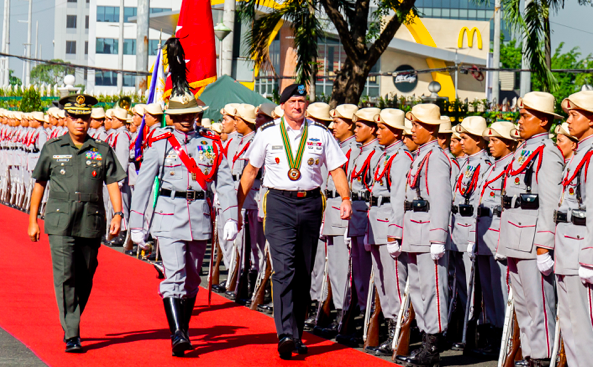
The military chief of the Philippines has questioned a mutual defence treaty with the US over fears it could drag the country into war with China.
Speaking yesterday (Tuesday, March 5) Defense Secretary Delfin Lorenzana said the Philippines-US Mutual Defense treaty (MDT) was “ambiguous and vague” and risked causing “confusion and chaos during a crisis”. His words came shortly after an American B52 bomber performed a flyover of the disputed South China Sea.
“The Philippines is not in a conflict with anyone and will not be at war with anyone in the future. But the United States, with the increased and frequent passage of its naval vessels in the West Philippine Sea [South China Sea], is more likely to be involved in a shooting war.
“In such a case and on the basis of the MDT, the Philippines will be automatically involved,” he said.
On Monday, a US B-52 bomber flew near some contested islands in the strategically important waters, US Pacific Air Forces, which oversees air operations in the region, confirmed. This was the first flyover involving a nuclear-capable B-52 since November.
The MDT between the US and the Philippines was signed in 1951, in the early years of the Cold War. It commits both countries to come to the assistance of the other in the event of an “armed attack on the metropolitan territory of either of the parties, or on the island territories under its jurisdiction in the Pacific or on its armed forces, public vessels or aircraft in the Pacific”.
Military pact under review
As we reported in December, Lorenzana ordered a review into whether the treaty was “still valid or still relevant today”.
“It’s a 67-year-old treaty,” he said. “Is it still relevant to our national interest? That’s what we should look at. Let us look at it dispassionately, without considering about past ties, about future ties – dispassionately.” He added that the end goal was “to maintain it, strengthen it, or scrap it”.
According to the Council on Foreign Relations, the military treaty has long been a source of contention in the Philippines because of its vagueness in how it covers disputed territories, such as islands in the South China Sea that both Manila and Beijing claim.
“Differences in interpretation arise from the fact that the United States does not explicitly state whether Philippine-claimed disputed territory falls under the provisions of the mutual defense treaty,” CFR said in a 2016 report. “Some of these territorial claims were made in the 1970s, decades after the treaty was ratified.”
Earlier this month, US Secretary of State Mike Pompeo met President Duterte and reassured Manila of Washington’s commitment to the military pact.
“As the South China Sea is part of the Pacific, any armed attack on Philippine forces, aircraft, or public vessels in the South China Sea will trigger mutual defense obligations under Article 4 of our Mutual Defense Treaty,” he said.
In addition to China and the Philippines, Vietnam, Malaysia, Taiwan and Brunei also have overlapping claims in the strategic waters.
Follow our Facebook page for daily news updates
…

Comments are closed.